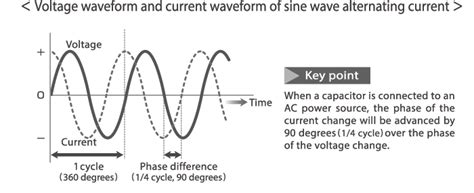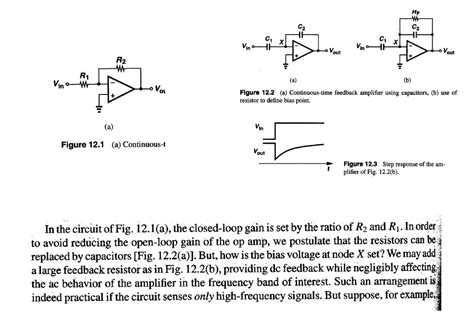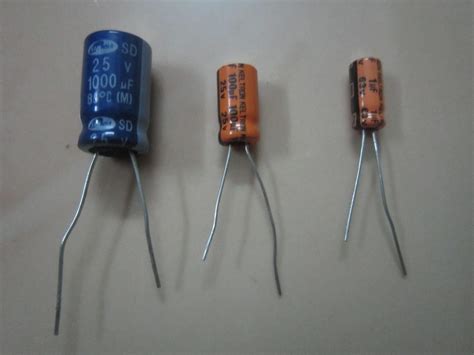What is a Capacitor?
A capacitor is a passive electronic component that stores electrical energy in an electric field. It consists of two conducting plates separated by an insulating material called a dielectric. When a voltage is applied across the plates, an electric field develops across the dielectric, causing positive charges to collect on one plate and negative charges on the other plate. This process is known as charging the capacitor.
The amount of charge that a capacitor can store depends on its capacitance, which is measured in farads (F). The capacitance is determined by three factors:
- The area of the plates (A)
- The distance between the plates (d)
- The permittivity of the dielectric material (ε)
The formula for capacitance is:
C = ε * (A / d)
where:
– C is the capacitance in farads (F)
– ε is the permittivity of the dielectric material (F/m)
– A is the area of the plates (m^2)
– d is the distance between the plates (m)
Types of Capacitors
There are several types of capacitors, each with its own characteristics and applications. The most common types are:
-
Ceramic Capacitors: These are made of ceramic dielectric material and are known for their low cost, high stability, and low loss. They are commonly used in high-frequency applications, such as RF circuits and resonant circuits.
-
Electrolytic Capacitors: These use an electrolyte as the dielectric material and are polarized, meaning they have a positive and negative terminal. They offer high capacitance values in a small package and are often used in Power Supply Filtering and coupling applications.
-
Film Capacitors: These use a thin plastic film as the dielectric material and are known for their high stability, low loss, and high voltage ratings. They are commonly used in audio circuits, power supplies, and motor start and run applications.
-
Tantalum Capacitors: These use tantalum pentoxide as the dielectric material and are polarized. They offer high capacitance values in a small package and are known for their low leakage current and high reliability. They are often used in portable electronic devices and military applications.
-
Supercapacitors: Also known as ultracapacitors or electric double-layer capacitors (EDLCs), these offer extremely high capacitance values (up to thousands of farads) and can store and release energy quickly. They are used in applications such as energy storage systems, electric vehicles, and backup power supplies.
| Type | Dielectric Material | Polarized | Typical Capacitance Range | Applications |
|---|---|---|---|---|
| Ceramic | Ceramic | No | 1 pF to 1 µF | RF circuits, resonant circuits |
| Electrolytic | Electrolyte | Yes | 1 µF to 1 F | Power supply filtering, coupling |
| Film | Plastic film | No | 1 nF to 10 µF | Audio circuits, power supplies, motor start/run |
| Tantalum | Tantalum pentoxide | Yes | 0.1 µF to 1000 µF | Portable electronics, military applications |
| Supercapacitor | Carbon | No | 1 F to 10,000 F | Energy storage, electric vehicles, backup power |
How Capacitors Store and Release Energy
When a voltage is applied across a capacitor, an electric field develops across the dielectric, causing charges to accumulate on the plates. The process of storing energy in a capacitor is called charging. During charging, the voltage across the capacitor increases gradually until it reaches the applied voltage.
The energy stored in a capacitor is given by the formula:
E = (1/2) * C * V^2
where:
– E is the energy stored in joules (J)
– C is the capacitance in farads (F)
– V is the voltage across the capacitor (V)
Once the capacitor is fully charged, it will maintain the stored energy until it is discharged. Discharging occurs when a load is connected across the capacitor, allowing the stored energy to be released as current flows through the load. The voltage across the capacitor decreases gradually during discharging until it reaches zero.
The time it takes for a capacitor to charge or discharge depends on the capacitance value and the resistance of the circuit. This is known as the time constant (τ), which is given by the formula:
τ = R * C
where:
– τ is the time constant in seconds (s)
– R is the resistance in ohms (Ω)
– C is the capacitance in farads (F)
The time constant represents the time it takes for the voltage across the capacitor to reach 63.2% of its final value during charging or to decrease to 36.8% of its initial value during discharging.

Capacitor Applications
Capacitors are used in a wide range of electronic circuits and systems. Some common applications include:
-
Power Supply Filtering: Capacitors are used to smooth out ripples and noise in power supply outputs, providing a clean and stable voltage to the load.
-
Coupling: Capacitors are used to couple AC signals between stages while blocking DC voltages, allowing only the desired AC signal to pass through.
-
Decoupling: Capacitors are placed near integrated circuits (ICs) to provide a local, low-impedance source of energy, minimizing noise and voltage fluctuations caused by sudden current demands.
-
Timing Circuits: Capacitors are used in combination with resistors to create time delays and oscillators, such as in RC timers and 555 timer circuits.
-
Resonant Circuits: Capacitors are used with inductors to create resonant circuits, which are used in radio and television tuners, filters, and oscillators.
-
Energy Storage: Capacitors, especially supercapacitors, are used to store and release large amounts of energy quickly, such as in backup power supplies and regenerative braking systems in electric vehicles.
-
Motor Starting: Large capacitors are used to provide the high starting current required by AC motors, helping them overcome the initial inertia and reach their operating speed.

Capacitor Specifications and Parameters
When selecting a capacitor for a specific application, several key specifications and parameters must be considered:
-
Capacitance: The amount of charge a capacitor can store per unit voltage, measured in farads (F).
-
Voltage Rating: The maximum voltage that can be safely applied across the capacitor without causing damage or failure.
-
Tolerance: The allowable variation in capacitance value from the nominal value, expressed as a percentage (e.g., ±10%).
-
Temperature Coefficient: The change in capacitance value with respect to temperature, expressed in parts per million per degree Celsius (ppm/°C).
-
Equivalent Series Resistance (ESR): The internal resistance of the capacitor, which determines its power loss and voltage drop when current flows through it.
-
Dissipation Factor (DF): The ratio of the capacitor’s ESR to its reactance, which indicates the capacitor’s efficiency in storing and releasing energy.
-
Leakage Current: The small current that flows through the dielectric when a voltage is applied, which can cause the capacitor to slowly discharge over time.
-
Frequency Response: The capacitor’s ability to maintain its capacitance value and low ESR across a range of frequencies, which is important in high-frequency applications.

Capacitor Safety and Handling
When working with capacitors, it is important to follow proper safety and handling procedures to avoid damage to the components and potential injury to yourself:
-
Discharge before Handling: Always discharge capacitors before handling them, as they can store dangerous amounts of energy even after being disconnected from a circuit.
-
Observe Polarity: Be sure to connect polarized capacitors (e.g., electrolytic and tantalum) with the correct polarity, as reverse biasing can cause the capacitor to fail or even explode.
-
Do Not Exceed Voltage Rating: Never apply a voltage higher than the capacitor’s rated voltage, as this can cause the dielectric to break down and the capacitor to fail.
-
Avoid Short Circuits: Do not allow the capacitor’s terminals to be short-circuited, as this can cause high currents to flow, damaging the capacitor and potentially causing injury.
-
Handle with Care: Avoid dropping or subjecting capacitors to excessive mechanical stress, as this can damage the internal structure and cause failure.
-
Observe Temperature Limits: Do not expose capacitors to temperatures outside their rated operating range, as this can cause the capacitance value to change or the capacitor to fail.
-
Proper Disposal: Dispose of capacitors properly, following local regulations for electronic waste, as some types (e.g., electrolytic) contain hazardous materials.
FAQ
-
What is the difference between a capacitor and a battery?
A capacitor stores energy in an electric field, while a battery stores energy through chemical reactions. Capacitors can charge and discharge much faster than batteries, but they have lower energy storage capacity. -
Can capacitors be connected in series or parallel?
Yes, capacitors can be connected in series or parallel to achieve desired capacitance values or voltage ratings. In series, the total capacitance decreases, and the voltage rating increases. In parallel, the total capacitance increases, and the voltage rating remains the same. -
How do I know if a capacitor is bad?
A bad capacitor may show signs such as bulging, leaking, or cracking. In circuits, a bad capacitor can cause problems like excessive ripple, noise, or reduced performance. You can test a capacitor using a multimeter or an ESR meter. -
What is the difference between a polarized and non-polarized capacitor?
Polarized capacitors, such as electrolytic and tantalum, have a positive and negative terminal and must be connected with the correct polarity. Non-polarized capacitors, such as ceramic and film, can be connected in either direction. -
Can I replace a capacitor with one that has a different capacitance value?
It depends on the application. In some cases, using a capacitor with a different capacitance value may affect the circuit’s performance or cause unexpected behavior. It is generally best to replace a capacitor with one that has the same or similar specifications.
In conclusion, capacitors are essential components in modern electronics, offering a wide range of applications and benefits. By understanding the basics of how capacitors work, their different types, and their key specifications and parameters, you can effectively select and use capacitors in your projects and designs. Always remember to follow proper safety and handling procedures when working with capacitors to ensure the best performance and longevity of your electronic systems.

No responses yet